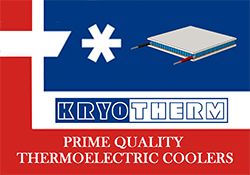The iPad mini will be announced in about 15 minutes. Given the crazy success of the iPad itself, it is likely that iPad mini will be well received in the marketplace as well. Apple has done a superb job in this space and they are to be commended for great engineering both in hardware and software.
Such devices as tablets and smart phones have made our lives easier and more efficient. We access information from “the cloud” for work; we grab a review from Yelp to eat at a great new restaurant; we SMS, BBM or iMessage on the fly with others. And all of this keeps us in touch, keep us entertained and keeps us productive. In some cases it might even keep us safe, such as with NOAA Weather Alerts. And all this ease of use takes technology. And all technology generates heat. In larger computers and telecommunications equipment, thermal engineers have space to move the heat off the chips that drive the technology and create the magic. But in a tablet or cell phone what do you do? Here’s a few answers on dealing with the thermal mangement of handhelds and tablets.
First, a coolingZONE article from our library, “Thermal Management of Handheld Telecommunications Products“. While an iPad may not seem like a telecommunications product, it is, by virtue of the fact that it is connected to “the network” wirelessly. Here’s an excerpt from the article:
Handheld telecommunication products have unique thermal characteristics due to their compact structure, high power density, and limited freedom for thermal enhancement. This article chose cellular phones as an example and reviewed some current works on the thermal management technology. CFD modeling indicates air circulation inside the phone can be ignored and the heat transfer inside the housing can be treated as a solid conduction problem. Component temperatures can be reduced significantly by introducing a direct solid conduction path between the component and the internal case and adding a heat spreader to the internal case. However, weight in particular is an issue in such applications. Improvements on material thermal properties and enhancing internal radiative transport also play an important role in thermal management. Finally, recent work done by Georgia Tech. [Reference 6] using synthetic jet technology to promote active cooling in a cellular phone mock-up demonstrates another innovative thermal solution.
Second, IEEE has a new paper that useful to checkout (fee required from IEEE). It is titled, “Generic Thermal Analysis for Phone and Tablet Systems“. Here’s the abstract:
Thermal management of handheld systems such as smart phones and tablet systems is becoming increasingly challenging due to increasing power dissipation. These mobile systems pose a significant challenge for implementation of traditional cooling schemes such as heat sinks and fans due to form factor limitations. Instead, new advanced cooling schemes have been developed. This article presents thermal model development from an analysis of today’s smart phone thermal management schemes and application of these techniques to a tablet system. Application processor temperature rise and tablet skin temperature are reported for thermal enhancement simulations using this tablet system. Some guiding principles are provided for efficient thermal design of handheld systems.
Finally, an article from Suff from New Zealand, helps to answer the question directly as to, “Tablets Made Small Don’t Heat Up“. From the article:
For many years if you wanted to use a computer then you had to put up with fan noise. A lot of newer computers like tablets have changed all that, but although the fan itself is a very low-tech piece of gear, eliminating it often requires some very high-tech developments.
The writers go on in the article to detail how this is done. Its a quick read but answers the question well.



